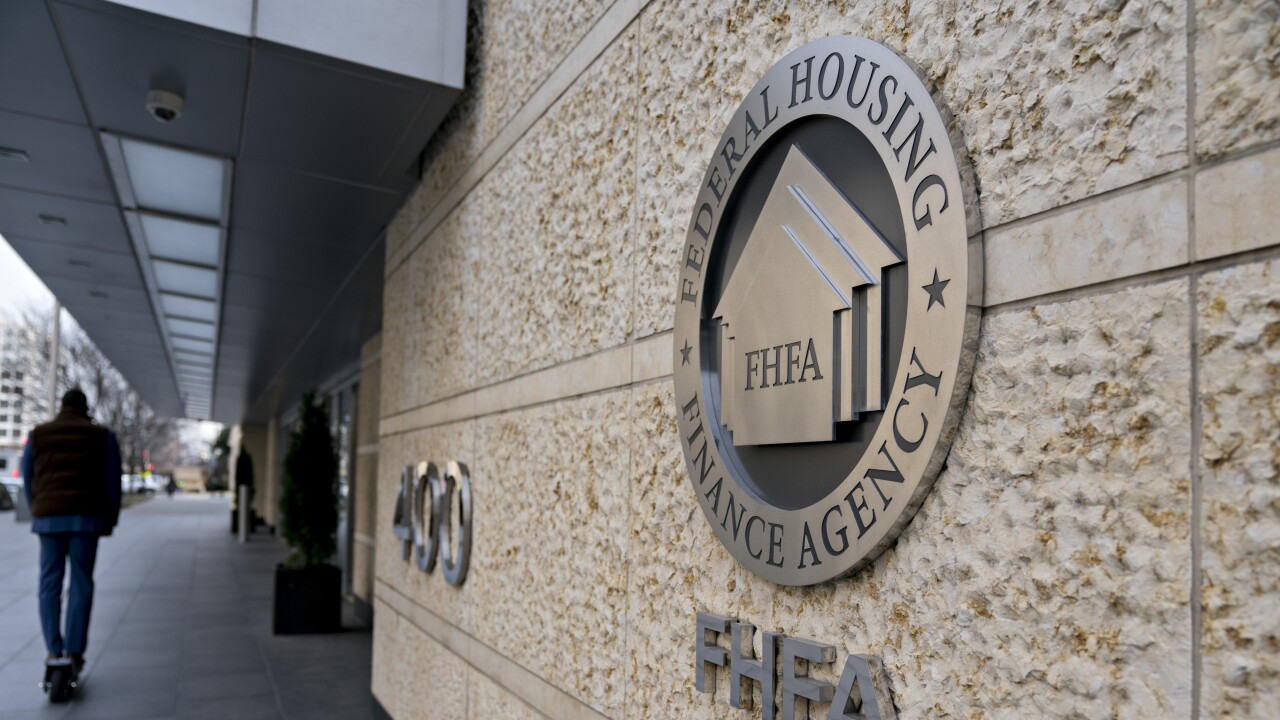While
After Chairman Jerome Powell's Senate testimony hinted at
That led him to think a 25 basis point is the most likely course at the time.
When it comes to inflation, however, another indicator, the Personal Consumption Expenditures Price Index, actually
Then the
But if more bank failures or some other dislocation in the market come about, "I think that might have them quickly go to no change in the Fed funds rate if there's real sort of market panic," he continued.
Rising prices are probably the thing the FOMC will be concentrating on at that March meeting, even as some think the stresses on the banking system could prompt a decision to temporarily take its foot off the metaphorical pedal, added Odeta Kushi, deputy chief economist at First American Financial.
"A pause may allow the Fed time to assess the risks posed to the banking system," Kushi said. "However, Jerome Powell has implied that inflation is public enemy No. 1, and it remains unclear whether the recent bank failures are enough to deter the Fed from further rate increases."
Selma Happ, chief economist at CoreLogic, also believed inflation concerns trump the SVB developments for the the Fed.
"It seems that recent developments have shifted the likelihood to either no rate hike or a smaller 25 basis point rate hike at next week's FOMC meeting," Happ said. "Nevertheless, given the Fed chair's fear of losing the fight against inflation means that the policymakers will continue to rely heavily on recent data points, particularly the robust job growth, and will continue to look for data points that validate the need for more aggressive action."
But it all depends upon the U.S. banking system stabilizing after this shock.
"If it doesn't, the Fed is unlikely to tighten further," Happ continued. "Mortgage rates may remain in the 6.5% range as investors' price in a potential pull back in further tightening."
Mortgage rates reflect movements in the 10-year Treasury yield, although investors can figure in potential changes in short-term rates in how they price those bonds.
As a result, conforming 30-year fixed rate loan pricing "may bounce around until the market has more clarity about how the Fed will respond," Kushi said.
Another question market analysts are looking at, Fratantoni said, is whether the Fed will slow or stop its mortgage-backed securities portfolio run-off, "particularly at a time where markets are showing dislocation and illiquidity. So I don't, I wouldn't expect now that's what they would do."
But he thinks slowing or stopping the balance sheet run-off is another tool the Fed could use if things get worse from here.
The 10-year Treasury closed at 3.52%, down 50 basis points from its March 9 high of 4.02%, the day before Silicon Valley collapsed. That is where it was for most of January.

Things were looking up back then for the markets and even for the homebuilders, Fratantoni noted, adding "obviously this is a different environment than January because of the bank failures."
The MBA economics team was forecasting the abnormally wide spreads between the 10-year Treasury and 30-year FRM to narrow to a more normal 180 basis points from the current range of around 280 basis points to 300 basis points.
"The challenge now is with the disruption caused by these bank failures, that spread may stay wider for a bit longer," Fratantoni said. "So even though 10-year Treasurys have come down, mortgage rates may not come down as quickly as they did in January."
Mortgage rates were down 41 basis points between March 9 and Monday, to 6.37%, according to Zillow's rate tracker.
Another possible impact is the normalization of the inversion between conforming 30-year FRMs and their jumbo counterparts. For much of the past year, jumbo rates have been 50 basis points below conforming loans as banks seek to attract these borrowers for other products, the MBA's Weekly Application Survey showed.
That could change following the closures.
"You may see banks still just as willing to do conforming loans at prevailing rates, but they may no longer be so eager to grow their balance sheet with jumbo loans in a world where bank balance sheet space just got a bit more precious, where it's getting more costly for them to finance through deposits," Fratantoni said.
In addition, more regulator scrutiny is likely to be placed on anything that would reduce the liquidity of bank balance sheets.





